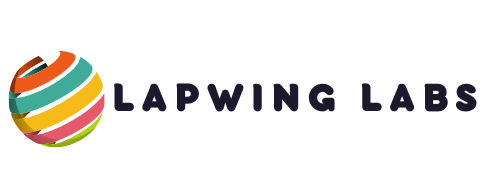In the modern digital workplace, remote desktop solutions have become an essential tool for maintaining productivity across distributed teams. However, a common issue many users face is the difficulty of connecting local USB devices in virtual environments. From printers and scanners to specialized equipment, many peripherals are often inaccessible due to the limitations of remote desktop protocols. USBoNET addresses these challenges by offering a seamless solution that simplifies USB redirection in these settings, making remote access to critical devices more practical and reliable.
USBoNET’s primary function is to enable RDP USB passthrough, allowing users to connect USB devices to remote desktop sessions with ease. Whether it’s a simple external storage drive or a more complex piece of equipment like a webcam or biometric scanner, USBoNET ensures that every peripheral can be accessed remotely as if it were directly connected to the virtual machine. This innovative approach bridges the gap between local devices and virtual environments, offering a reliable, user-friendly solution that improves workflow efficiency in remote setups.
In addition to its device-sharing capabilities, USBoNET provides robust tools for managing access within virtual environments. Administrators can easily set up rules to govern which users have permission to interact with specific devices, enhancing both security and control. This feature is crucial in environments where sensitive data is handled, as it allows for precise control over who can use which devices. By integrating advanced monitoring tools, USBoNET ensures that every RDP USB passthrough session is secure, tracked, and optimized for performance, safeguarding both the data and the devices involved.
Mastering Usb Redirection In Remote Desktops: Practical Solutions And Expert Advice With Usbonet
In remote desktop environments, the ability to seamlessly access and manage USB devices is crucial for maintaining productivity and workflow efficiency. However, this task is often met with technical challenges, ranging from compatibility issues to security risks. Without the right tools, connecting peripheral devices in a virtual setting can lead to significant disruptions and limitations. USBoNET emerges as a comprehensive solution designed to address these obstacles, providing a streamlined and secure approach to USB redirection.
Below, we explore the common problems associated with USB redirection in remote desktops and how USBoNET offers practical solutions for each, helping to create a smoother, more secure experience. Additionally, we provide recommendations for optimizing the use of this powerful tool.
| Challenges in USB redirection | USBoNET solutions | Recommendations for optimized use |
| Limited device compatibility | Many remote desktop solutions, such as RDP or Citrix, often do not support a wide range of USB peripherals. Devices like specialized scanners, webcams, or biometric readers are frequently inaccessible. | USBoNET uses advanced port virtualization technology that allows any USB device to be redirected, regardless of its type or the remote desktop protocol being used. This ensures that even complex or less common peripherals can be accessed remotely. |
| Performance bottlenecks | High-traffic devices like video cameras or storage drives can slow down the entire virtual session due to bandwidth limitations or inadequate device configurations. | USBoNET optimizes the performance of high-traffic devices by ensuring smooth data transmission across networks of any type, including Wi-Fi, LAN, and WAN. Additionally, it allows users to adjust bandwidth usage for better performance. |
| Security risks in data transmission | USB redirection in virtual environments can expose organizations to data breaches or unauthorized access to sensitive devices, especially when connecting over insecure networks. | USBoNET includes robust encryption protocols to secure data transmitted during RDP USB passthrough sessions. It also allows for granular control over device access, ensuring only authorized users can interact with specific peripherals. |
| Complex setup and configuration | Configuring USB redirection in standard remote desktop solutions often involves intricate setups, which can be challenging for users without technical expertise. | USBoNET simplifies the setup process, offering a user-friendly interface that requires only a few clicks to enable USB passthrough. With minimal configuration, users can quickly start sharing and using devices remotely. |
| Monitoring and managing device access | Remote environments often lack tools for monitoring who has access to redirected USB devices or tracking how these devices are used, which can lead to security vulnerabilities or unauthorized usage. | USBoNET provides advanced management tools that allow administrators to set access rules for each device. It also includes monitoring features that track user activity, ensuring full visibility and control over device usage in the virtual environment. |
| Interruption in remote access due to network issues | Network inconsistencies can disrupt USB connections, leading to interrupted workflows and device access problems, especially for users in remote or high-traffic network environments. | USBoNET’s intelligent design allows for reconnection in cases of network interruptions. The platform supports multiple network types and ensures stable USB redirection, minimizing downtime during remote work sessions. |
USBoNET offers a well-rounded set of features aimed at resolving the most common issues with USB redirection in remote desktop environments.

By addressing these challenges, the platform enables businesses to operate more efficiently, even in the most demanding virtual setups. Whether you are dealing with complex peripheral devices or ensuring security in remote sessions, USBoNET provides the flexibility and control needed to optimize every aspect of USB redirection.
With the right strategy and proper implementation of USBoNET’s features, users can experience smoother device connectivity, improved security, and better overall performance in remote desktop settings.
Efficient Access Control In Usbonet: Setting Rules And Monitoring User Activity
One of the key strengths of USBoNET is its robust access control features, which allow administrators to manage device access in remote desktop environments with precision. This functionality is essential for maintaining security, especially in large organizations where multiple users may need access to the same peripherals. Below is a detailed breakdown of how USBoNET enables efficient management of device access and user activity monitoring.
- Customizable access rules: USBoNET allows administrators to create custom rules that control which users can access specific USB devices. These rules can be easily tailored based on individual or group permissions, providing flexibility in managing device access across various departments or user roles.
- Real-time monitoring of device usage: administrators can track how and when devices are being accessed in real time. This feature is particularly useful for auditing purposes, as it ensures full transparency and accountability for every device connected to a remote desktop session.
- Granular user permissions: with USBoNET, you can assign permissions at a granular level, defining which users can connect, disconnect, or modify settings for USB devices. This detailed control ensures that only authorized personnel can make changes, enhancing overall security and preventing unauthorized use.
- Device isolation options: USBoNET provides the ability to isolate devices for specific users or groups, ensuring that sensitive devices are only available to the right individuals. This isolation helps protect critical peripherals from being accessed by unauthorized users, even in shared environments.
- Comprehensive activity logs: the platform generates detailed logs of all user activity, allowing administrators to review who accessed which device and at what time. These logs provide an essential layer of security, helping to identify potential misuse or security breaches.
- Access notifications: USBoNET can be configured to send alerts whenever a device is accessed or when changes are made to the access rules. These notifications help administrators stay informed of all activities and respond quickly to any unauthorized actions.
- Dynamic rule adjustments: administrators can modify access rules on the fly without interrupting ongoing sessions. This dynamic control is especially valuable in fast-paced environments where device access needs to be frequently updated to accommodate changing user requirements.

By utilizing these access control features, USBoNET ensures that organizations can securely manage and monitor device usage within remote desktop environments. This comprehensive approach to access control not only enhances security but also improves the efficiency and accountability of remote operations.
Conclusion: Maximizing Efficiency And Security In Remote Desktop Environments With Usbonet
USBoNET stands out as a powerful tool for addressing the challenges of USB redirection in remote desktop environments. By offering seamless RDP USB passthrough, this platform eliminates many of the frustrations associated with connecting peripheral devices to virtual machines, allowing businesses to operate more smoothly and efficiently. Its advanced port virtualization technology ensures that even the most specialized or high-traffic devices can be accessed remotely with minimal effort.
USBoNET provides exceptional control over device access and user activity. With customizable access rules, real-time monitoring, and comprehensive activity logs, administrators can maintain a high level of security while ensuring that the right users have access to the tools they need. This level of oversight is crucial in today’s increasingly remote workforce, where data security and operational efficiency must be balanced effectively.
Incorporating USBoNET into your virtual desktop setup can significantly improve the way your organization handles USB devices. By streamlining the redirection process and providing powerful management features, USBoNET not only boosts productivity but also strengthens your security protocols, making it a valuable asset for any business relying on remote desktop technology.



